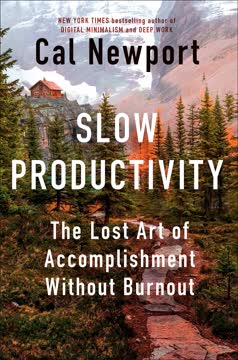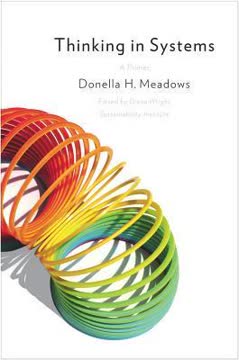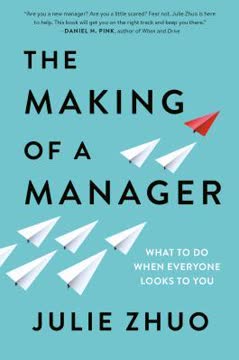Key Takeaways
1. Understand how the mind decides to act for effective behavior change
Most of the time, we're not consciously deciding what to do next.
Dual process theory. Our minds operate in two modes: the intuitive System 1 (fast, automatic, emotional) and the deliberative System 2 (slow, conscious, rational). Most of our daily behavior is governed by System 1, relying on habits, instincts, and mental shortcuts. System 2 only engages for novel situations or when we intentionally direct our attention.
Decision-making mechanisms:
- Habits: Learned patterns triggered by environmental cues
- Intuitive responses: Quick evaluations based on past experiences
- Heuristics: Mental shortcuts that simplify decision-making
- Conscious calculation: Deliberate analysis for unfamiliar or important decisions
Understanding these mechanisms allows product designers to target the appropriate cognitive processes for effective behavior change.
2. Identify the right outcome, actor, and action to target
You know what you want to measure. Now, you need to measure it: by instrumenting the product or otherwise gathering data about your users' behavior and the target outcome.
Clear targets. Successful behavior change products require well-defined objectives:
- Outcome: The measurable real-world change you want to achieve
- Actor: The specific user group you're targeting
- Action: The concrete behavior you want users to perform
User research. Conduct thorough research to understand your target users:
- Prior experience with similar actions and products
- Existing motivations and barriers to action
- Relationship with your company or product
Generate multiple potential actions and evaluate them based on impact, motivation, ease, and cost-effectiveness. Select the Minimum Viable Action – the simplest version that allows you to test your product's core assumptions.
3. Structure the action to make it feasible and inviting
Pare it down to the Minimum Viable Action.
Simplify and tailor. Break down the target action into discrete steps and optimize each one:
- Make steps simple and straightforward
- Ensure they appear easy to complete
- Create "small wins" to build momentum
- Provide clear indicators of success
Reduce user burden. Look for opportunities to:
- Automate parts of the process
- Use intelligent defaults
- Turn repeated actions into habits
Develop a behavioral plan that outlines the ideal user journey from inaction to consistent behavior change. This plan serves as a blueprint for product development and helps identify potential obstacles.
4. Construct the environment to support desired behavior
Ideally, the action on the page is inherently time-sensitive: people need to take the action immediately because of some existing, external rationale—like taxes on April 15.
Motivation. Increase user motivation by:
- Leveraging existing motivations
- Using social proof and peer comparisons
- Framing benefits in terms of avoiding losses
Cues. Provide clear prompts for action:
- Integrate cues into the user's daily environment
- Use varied cues to avoid being ignored
- Build associations with existing routines
Feedback. Create effective feedback loops:
- Provide timely, clear, and actionable feedback
- Ensure users care about and can act on the feedback
Remove obstacles. Identify and address potential barriers:
- Eliminate distractions within the product
- Address external factors that may hinder action
5. Prepare the user mentally for taking action
Change how users see themselves.
Self-narrative. Help users develop a supportive self-image:
- Highlight past successes in related areas
- Frame setbacks as surmountable challenges
- Encourage users to see themselves as someone who naturally takes the desired action
Behavioral bridge. Connect the new action to familiar, positive experiences:
- Use analogies to make the new behavior feel more comfortable
- Highlight similarities to actions the user already performs successfully
Education. Provide essential information strategically:
- Focus on actionable knowledge
- Deliver information close to the moment of decision
- Avoid overwhelming users with unnecessary details
Build users' skills incrementally, incorporating small challenges that prepare them for more difficult actions later.
6. Design an engaging interface that facilitates behavior change
Does the user have a clear motivation to continue on each screen, and is she thinking about that motivation in that moment?
User stories. Translate the behavioral plan into specific user stories or product requirements that guide interface design.
Behavioral tactics. Apply psychological principles to optimize each interaction:
- Prime relevant associations
- Leverage loss aversion
- Use social comparisons
- Avoid cognitive overload and choice paralysis
Design patterns. Consider established design patterns for behavior change products:
- Decision-making support tools
- Habit-forming games
- Goal-tracking interfaces
- Social sharing platforms
Balance behavioral effectiveness with general principles of good product design, ensuring the application is intuitive, visually appealing, and enjoyable to use.
7. Measure impact and refine the product iteratively
Grace Hopper said it well: "One accurate measurement is worth a thousand expert opinions."
Benchmark impact. Establish clear metrics for your target outcome and action. Use experimental methods (like A/B testing) whenever possible to measure causal impact.
Identify obstacles. Analyze user behavior to find bottlenecks:
- Use the Create Action Funnel to diagnose issues
- Combine quantitative data analysis with qualitative user research
Generate solutions. Develop potential improvements based on behavioral insights:
- Revisit the action-environment-user framework
- Apply specific behavioral tactics to address identified problems
Test and iterate. Measure the impact of each significant change:
- Make testing a routine part of the development process
- Use both quantitative and qualitative methods to evaluate changes
Continuously refine the product based on real-world data, always keeping the target outcome in mind as the ultimate measure of success.
Last updated:
FAQ
What's Designing for Behavior Change about?
- Focus on Behavior Change: The book explores designing products that effectively change user behavior by applying principles from psychology and behavioral economics.
- Four Phases of Design: It outlines a four-phase process: understanding the mind, discovering the right behavior, designing the product, and refining it based on user feedback.
- Practical Application: Stephen Wendel shares insights from his experience at HelloWallet, emphasizing creating products that help users achieve their goals.
Why should I read Designing for Behavior Change?
- Real-World Impact: The book provides actionable strategies for creating products that can significantly improve users' lives, making it relevant for designers, product managers, and social scientists.
- Evidence-Based Techniques: It is grounded in research, offering evidence-based methods to understand and influence behavior effectively.
- Comprehensive Framework: Readers will gain a structured approach to behavior change, applicable across various domains, from health to finance.
What are the key takeaways of Designing for Behavior Change?
- Behavior Grid: Introduces the Behavior Grid, mapping out 15 ways behaviors can change, helping designers identify effective strategies.
- Behavior Model (B=MAT): Emphasizes the Behavior Model, stating that behavior occurs when motivation, ability, and a trigger converge simultaneously.
- Tiny Habits Method: Discusses the Tiny Habits method, simplifying habit formation by breaking down behaviors into manageable steps.
What is the Behavior Model (B=MAT) in Designing for Behavior Change?
- Three Components: The Behavior Model consists of Motivation (desire to perform the behavior), Ability (capacity to perform the behavior), and Trigger (prompt to act).
- Convergence Required: For a behavior to occur, all three components must be present simultaneously; if one is missing, the behavior is unlikely to happen.
- Practical Application: This model helps designers create interventions ensuring users are motivated, capable, and prompted to take action.
How does Designing for Behavior Change define "Tiny Habits"?
- Simplified Habit Formation: Tiny Habits is a method encouraging users to start with very small, easily achievable behaviors leading to larger changes over time.
- Two-Step Process: Involves scaling back the desired behavior to something manageable and finding an existing routine to serve as a trigger.
- User Empowerment: This approach empowers users by allowing them to experience quick wins, building confidence and encouraging further behavior change.
What is the Create Action Funnel in Designing for Behavior Change?
- Five Stages of Action: Consists of Cue, Reaction, Evaluation, Ability, and Timing, each representing a critical component influencing user action.
- User-Centric Design: Helps designers focus on the user's experience and psychological factors driving behavior, creating more effective products.
- Framework for Analysis: Serves as a framework for analyzing user interactions and identifying potential barriers to action.
How can I apply principles from Designing for Behavior Change to my product?
- Understand Your Users: Begin by deeply understanding your target users, their motivations, and the barriers they face through user research.
- Develop a Behavioral Plan: Create a plan outlining desired actions, outcomes, and steps users need to take, tailored to their specific needs and contexts.
- Iterate and Test: Implement an iterative design process, continuously testing and refining your product based on user feedback and behavioral data.
How does Designing for Behavior Change suggest increasing motivation?
- Leverage Existing Motivations: Identify and highlight users' existing motivations to act, rather than trying to create new ones from scratch.
- Use Rewards: Implement rewards that resonate with users, whether monetary, social, or intrinsic, to encourage action.
- Create Urgency: Frame the action to emphasize immediate benefits or consequences, making it feel more pressing.
What strategies does Designing for Behavior Change suggest for changing existing habits?
- Avoid the Cue: Help users identify and avoid triggers that prompt the unwanted habit, reducing the likelihood of engaging in it.
- Replace the Routine: Encourage users to substitute the unwanted behavior with a new, healthier routine that provides a similar reward.
- Mindfulness Techniques: Promote mindfulness to help users become aware of their habits and make conscious choices to change them.
What is the significance of user personas in Designing for Behavior Change?
- Understanding Users: User personas help designers understand the diverse motivations, experiences, and behaviors of different user groups.
- Tailoring Solutions: Allow for the customization of interventions and product features to better meet the needs of specific user segments.
- Guiding Design Decisions: Serve as a reference point throughout the design process, ensuring user needs remain central to product development.
How does Designing for Behavior Change recommend structuring the action for behavior change?
- Break Down Steps: Decompose the target action into manageable steps that users can easily follow, ensuring clarity and simplicity.
- Automate Where Possible: Identify opportunities to automate parts of the action, reducing the burden on users and increasing the likelihood of completion.
- Provide Feedback: Implement feedback mechanisms that inform users of their progress, reinforcing positive behavior and encouraging continued engagement.
What are some common pitfalls to avoid when designing for behavior change according to Designing for Behavior Change?
- Ignoring User Feedback: Failing to incorporate user feedback into the design process can lead to products that do not meet user needs.
- Overcomplicating the User Experience: Making the product too complex can deter users from taking action; focus on simplicity and clarity.
- Neglecting the Emotional Aspect: Underestimating emotional factors influencing decision-making can hinder product effectiveness.
Review Summary
Designing for Behavior Change receives mostly positive reviews, with an average rating of 4.11/5. Readers praise its practical framework for applying behavioral science to product design, though some find it repetitive and longer than necessary. The book is valued for its detailed methodology, academic rigor, and real-world applications. Many reviewers appreciate the CREATE action funnel and integration with agile processes. Criticisms include dense writing, lack of focus on habit formation, and limited coverage of ethical considerations in behavior change design.
Similar Books







Download PDF
Download EPUB
.epub digital book format is ideal for reading ebooks on phones, tablets, and e-readers.




